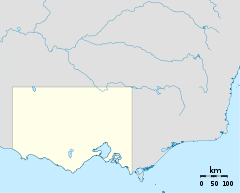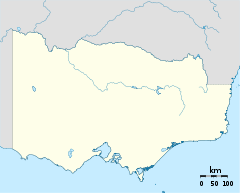Port Phillip District


The Port Phillip District was an historical administrative division of the Colony of New South Wales, which existed from September 1836 until 1 July 1851, when it was separated from New South Wales and became the Colony of Victoria.
The District's borders were not initially defined, but in 1839 the District was defined as consisting of all the lands within New South Wales south of 36°S latitude, and between 141°E (that is, the border with the future Colony of South Australia) and 146°E longitude.[1] In January 1840, coinciding with the introduction of a fixed-price land sale scheme, the District's northern border was advanced up to follow the course of the Murrumbidgee River, and from its source to the Pacific coast at Moruya.[2] However, after extensive opposition in Sydney, including from the Legislative Council, the border was retracted south to the Murray River.[2][3] On 1 July 1843, a proclamation formalised the border as running from Cape Howe, to the nearest source of the Murray River, and then along the course of the Murray to the border with South Australia.[1]
On 1 July 1851, the District was separated from New South Wales under provisions of the Australian Colonies Government Act 1850, and became the Colony of Victoria.
References
- 1 2 "What is the northern boundary of Victoria?". The Age. 1906-04-21. Retrieved 2009-04-26.
- 1 2 Shaw, A. G. L. (June 1982). "Agitation for the Separation of the Port Phillip District from the Colony of New South Wales, 1838-1850". Journal of the Royal Australian Historical Society. Sydney: Royal Australian Historical Society. 68 (1): 1–17. ISSN 0035-8762.
- ↑ Shaw, A. G. L. (1996). A History of the Port Phillip District: Victoria Before Separation. Carlton South, Victoria: The Miegunyah Press. ISBN 0-522-84651-3.
